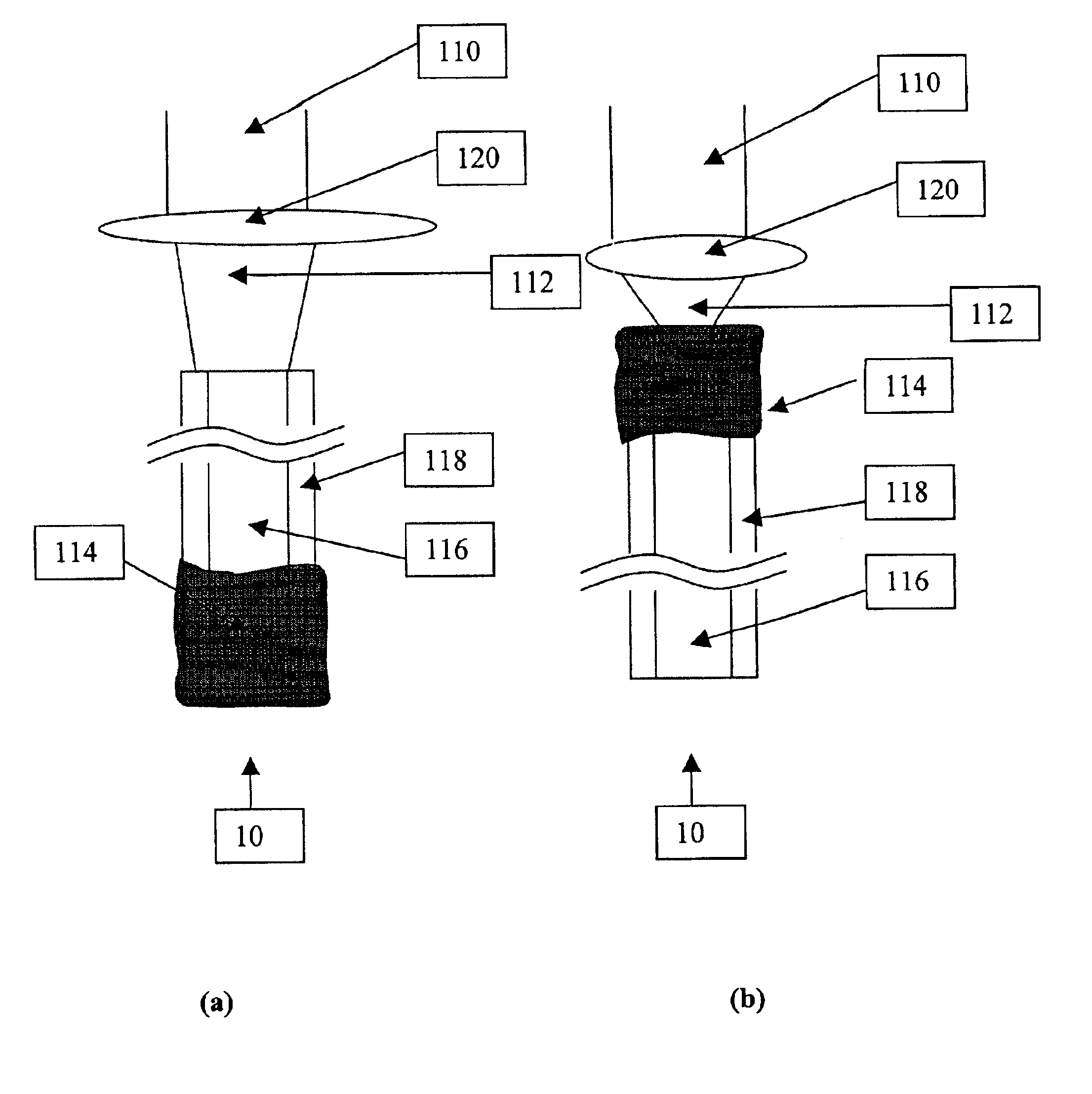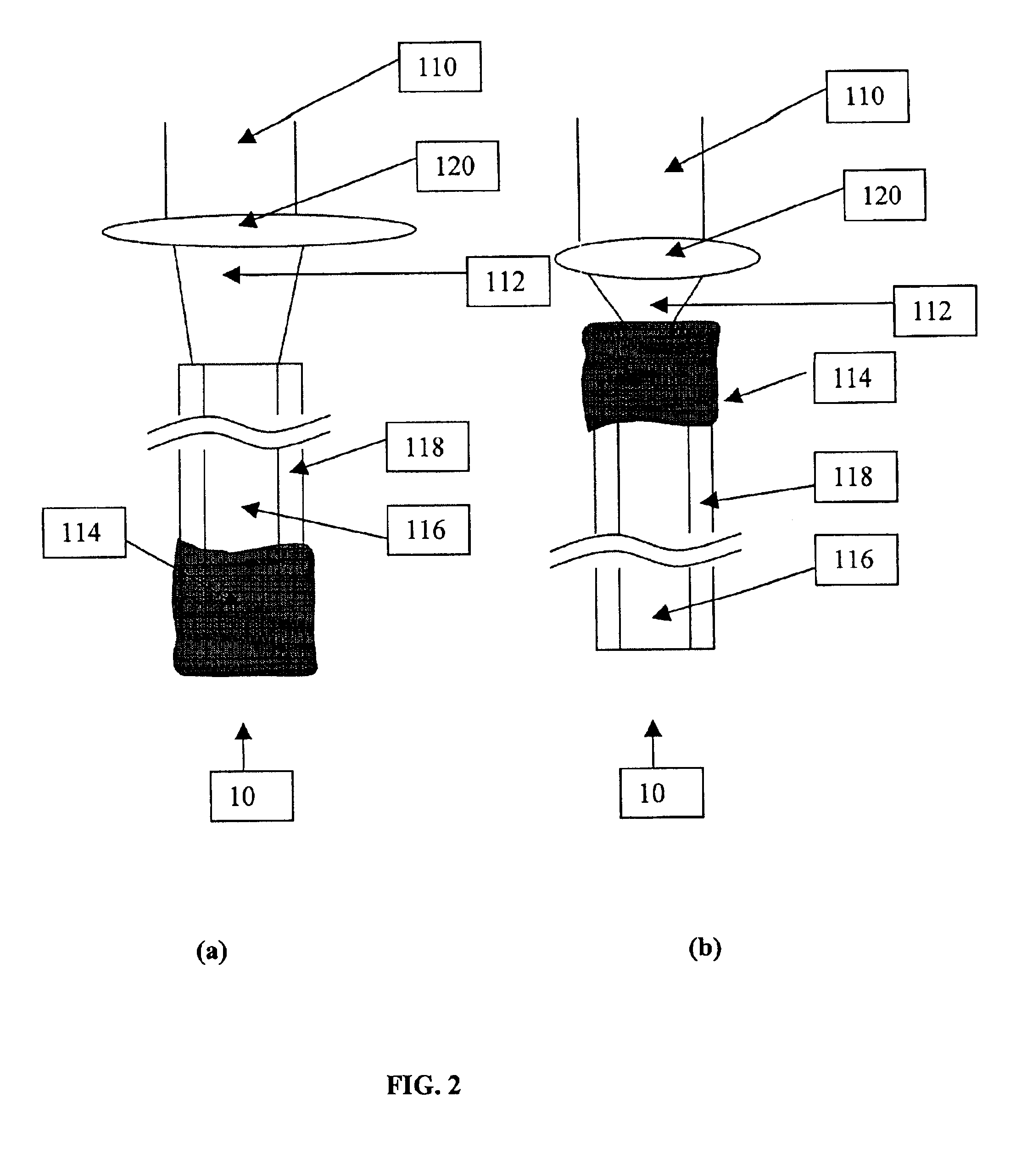Micromachined fiber optic sensors
a fiber optic sensor and micromachined technology, applied in the field of microoptic sensors, can solve problems such as limiting the temperature of operation of sensors
- Summary
- Abstract
- Description
- Claims
- Application Information
AI Technical Summary
Benefits of technology
Problems solved by technology
Method used
Image
Examples
example 1
Pressure Sensor Configuration and Fabrication
[0049]The configuration of the Fabry-Perot interferometric optical fiber pressure sensor reported here is shown in FIG. 1(b). The silicon diaphragm 12 and the cavity-fiber interface act as reflectors forming a Fabry-Perot interferometer. Pressure causes the diaphragm 12 to move, thus changing the Fabry-Perot reflectivity, and allowing measurement of pressure. The optical fibers 10 used for the fabrication are generally borosilicate multimode glass fibers (Techman International Corporation Inc.; the index of refraction of borosilicate glass is 1.5098 at 850 nm).
[0050]Optic fibers are generally used with cladding diameters of from about 1 μm to about 5000 μm and are preferably from about 2 μm to about 500 μm. For example, the diameter of the core will determine whether the fiber optic is “single mode” or “multimode”. The terms single mode and multimode refer to the dimensional orientation of rays propagating through the fiber. Single mode f...
example 2
Temperature Sensor Configuration
[0066]The temperature sensor is achieved by anodically bonding ultra-thin crystalline silicon onto a fiber end face (the figure above). Thin-film based temperature sensors have been realized in a number of ways including sputter-deposited semiconductor [6] and dielectric [7] materials. For effective operation the thickness of the silicon film of these Fabry-Perot interferometer based sensors usually falls within the range of 0.8 μm to 4.3 μm [6]. Greater sensitivity is obtained at the high end of this range; however, film-nonuniformity, and stress have been found to impose an upper thickness limit of about 2 μm for sputter-deposited semiconductors. In this study we used the anodic bonding method to chemically bond ultra-thin crystalline silicon onto fiber end faces; this enables achieving a thicker crystalline silicon layer on the fiber end face. As a result, a higher sensitivity can be expected. Further, the use of crystalline silicon with proper enc...
PUM
| Property | Measurement | Unit |
|---|---|---|
| thickness | aaaaa | aaaaa |
| thickness | aaaaa | aaaaa |
| thickness | aaaaa | aaaaa |
Abstract
Description
Claims
Application Information
 Login to View More
Login to View More - R&D
- Intellectual Property
- Life Sciences
- Materials
- Tech Scout
- Unparalleled Data Quality
- Higher Quality Content
- 60% Fewer Hallucinations
Browse by: Latest US Patents, China's latest patents, Technical Efficacy Thesaurus, Application Domain, Technology Topic, Popular Technical Reports.
© 2025 PatSnap. All rights reserved.Legal|Privacy policy|Modern Slavery Act Transparency Statement|Sitemap|About US| Contact US: help@patsnap.com



